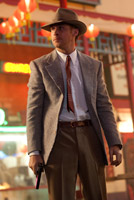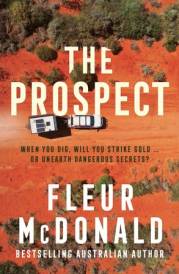Ryan Gosling First Man
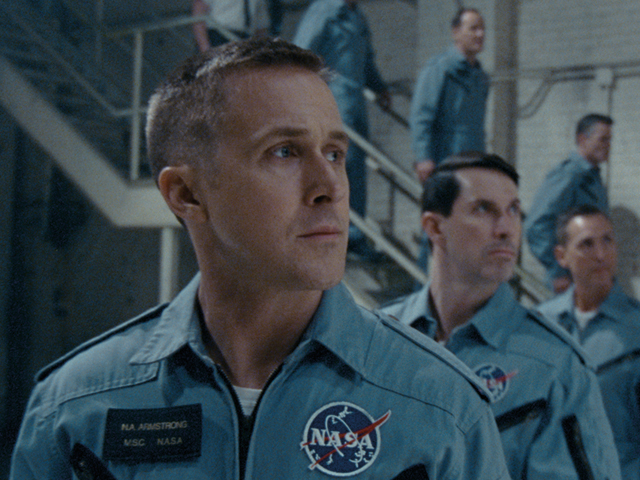
First Man: Uncovering a Private Life
Cast: Corey Stoll, Jon Bernthal, Pablo Schreiber, Ryan Gosling, Kyle Chandler, Claire Foy, Jason Clarke, Patrick Fugit
Director: Damien Chazelle
Genre: Drama
Synopsis: On the heels of their six-time Academy Award®-winning La La Land, Oscar®-winning director Damien Chazelle and star Ryan Gosling reteam for Universal Pictures' First Man, the riveting story behind the first manned mission to the moon, focusing on Neil Armstrong and the decade leading to the historic Apollo 11 flight. A visceral and intimate account told from Armstrong's perspective, based on the book by JAMES R. HANSEN, the film explores the triumphs and the cost"on Armstrong, his family, his colleagues and the nation itself"of one of the most dangerous missions in history.
Chazelle's interest and stories continue to focus on the cost of achievement…and whether or not excellence is worth the price for those who reach. Just as he reimagined the discipline of mentorship on the road to mastery in Whiplash"and deconstructed the movie musical in La La Land"Chazelle now challenges expectations of what a "mission picture" should resemble. Discovering First Man alongside numerous collaborators, Chazelle approaches the film from interior angles in order to immerse audiences in this impossible journey.
Portraying the passionate, indomitable, unsung hero Janet Armstrong is Claire Foy (Netflix's The Crown)"Neil's wife and the woman who helped make these times monumental. Although she assumed she'd build her life with someone with an adventurous disposition, Janet grapples with the sacrifices they're asked to make in this unexpected journey into history. While Neil travels to the heavens to deal with their shared grief of unthinkable loss, Janet must handle the Earthly business of being the backbone of the burgeoning space program. One of the most public faces of NASA families…she led a private life of wondering if she'd chosen this path to shape history…or if fate had done so for the Armstrongs.
First Man
Release Date: October 11th, 2018
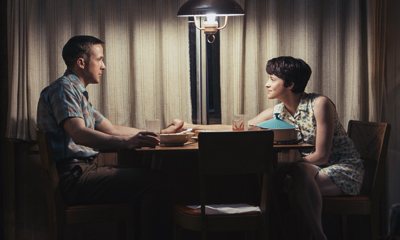 About The Production
About The Production
First Man: Uncovering a Private Life
Based on James R. Hansen's book "First Man: The Life of Neil A. Armstrong," First Man reveals intimate insights into the global hero's private life and previously unknown character-defining moments. After receiving a PhD in the history of science and technology from Ohio State and spending more than 20 years writing and teaching about space and history, Hansen set out to write his first biography. It was in the year 2000 that the author first reached out to Armstrong and requested to tell the hero's tale. After two months, Armstrong"who rarely agreed to interviews, much less entertained the idea of a lifelong documentation"politely declined.
It would be some time after Hansen's initial request before the pilot gave the go-ahead to pen his biography. "It took about two years for me to finally get the greenlight from him," reflects the author. "Neil's family encouraged him to do it. The crucial moment came when he invited me up to his home in suburban Cincinnati"where he had lived for about 20 years"and we spent the afternoon in his study talking for hours. I felt very positive, but even after this meeting it took some time for him to fully get on board." Hansen saw the duality of his subject as a fascinating one. "Neil could be in a cockpit making instantaneous decisions but when it came to other things about his life, he was amazingly cautious and deliberate."
Long prior to his in-person introduction to Armstrong, Hansen had conducted hundreds of interviews for other subjects; it was that experience taking oral histories that aided in gaining Armstrong's confidence. "One thing that became important with him was his developing trust in you," Hansen explains. "Not only did we grow up 50 miles from one another"he grew up in Ohio and I grew up in Indiana, and went to school at Ohio State"but both our families had also grown up on farms. In a lot of ways, we spoke the same language, in terms of regional dialect. What we know of Neil is as this one dimensional, iconic symbol…but he was a living, breathing, three-dimensional human being."
It was crucial to the production team not simply to tell a story about a hero of whom we've seen many pictures and interviews, but to explore what drove him, his family and colleagues at NASA to accomplish the unthinkable. "This is a story about how hard it was, how much of a risk it was, how dangerous it was to all of those men," says First Man executive producer Adam Merims. "Neil started out in the Korean War as a pilot and then became a test pilot for the Air Force, then ultimately for NASA. At that time test pilots would die with alarming frequency, so many people in the early part of the story in his life were killed; yet Neil stayed true to his path and achieved what was previously considered unachievable."
Armstrong developed a close kinship to the author of his biography, who serves as a co-producer on the film, and that indeed allowed the production to move forward. "Neil had a great relationship with Jim Hansen, and he felt very comfortable with the idea that Jim had captured in his book"and what he had hoped to convey," says First Man producer Wyck Godfrey. "Neil thought that as long as we followed the blueprint that Jim provided, he was comfortable with us moving forward with making this film."
Although known for being a very private person, after meeting the filmmakers, Armstrong agreed to a movie adaptation of his life. Fortunate to have been introduced to Armstrong before he passed away on August 25, 2012, Godfrey explains that there was no way to make this film without his blessing. "It was a gratifying experience to be able to meet him," states the producer. "Neil was very open to the idea of making a movie about his life. If he wasn't, we wouldn't be here."
Bowen recounts the day: "I met him with his second wife at the Jonathan Club in downtown Los Angeles, and he was going to be getting an award the next day. It didn't become intimidating until you shook the man's hand; he had this incredible grip. As you started to talk, you realized he still knew so many details about that experience." The producer saw that interesting duality in Armstrong about which so many comment. "He managed to warm the room up because"in the middle of talking about these very complex things"he had a wonderful, wry sense of humor and kept us on our toes. He was an incredible man."
Known by the public as a reclusive individual, Neil Armstrong was so much more in the eyes of his family and the people who held him close. Younger son Mark Armstrong hopes the film brings to light the person his father truly was. "I hope people see him as a man who was faced with very difficult circumstances," says Mark Armstrong. "A lot was asked of him, and he did his best to do the right thing. That was always his mantra: to take each situation and find the right way to handle it."
"He was just kind of a regular guy," adds Mark's brother, Neil's elder son, Rick Armstrong. "For those who just saw him on the news might not know that, but he was a pretty funny guy, too. When you saw him around his friends, he was a completely different person than his public image. I'm hoping that the movie will help bring that out."
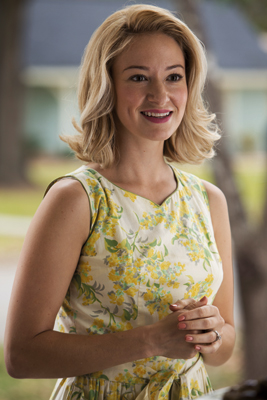 Seeking the Brave Few: Damien Chazelle Joins
Seeking the Brave Few: Damien Chazelle Joins Although producers Wyck Godfrey and Marty Bowen had been developing First Man for some time, it would not be until they met Oscar®-winning director Damien Chazelle that the final pieces would fall into place. This was after the period in which Chazelle created Whiplash and during pre-production of La La Land. Relays Godfrey: "We told Damien about the character in the story, and he fell in love with it and came aboard to help us. From there, it all moved quickly."
Alongside his fellow producers, Chazelle would seek out Oscar®-winning screenwriter Josh Singer to craft the screenplay. Chazelle was struck by Singer's singular take on the protagonist's arc, feeling their writer instinctively got what was most fascinating about their hero. "Damien wanted to treat the story like a thriller," Godfrey notes. "He wanted to defy expectations about what it took to successfully land a man on the moon, and put you in the shoes of what it would have been like at the time"with all of the technological barriers facing these guys."
Chazelle's request of the team was to ensure that anything seen on screen was authentic to the time period and these brutal missions. Months before pre-preproduction began, he and his collaborators were workshopping scenes, spending time with the Armstrong family, as well as others who understood this story intimately.
His fellow producers agree that Armstrong's reality was more terrifying than fiction. "That goes to the aesthetic of the film," reflects Bowen. "We've all seen films that are done in space, and when you think of space you think of technology, computers, digital formats and computer graphics. Damien's goal was to try to make this as visceral as possible, and in order to do that the film had to feel as analog as possible. The challenge of this film, the thing that is so exciting about it, too, is how do we put an audience in that cockpit? How do we make them really feel"not just see, but feel and witness this incredible accomplishment?"
A common refrain heard during pre-production and shooting was 'we have computers in our pockets that are more powerful than the ones that got us to the moon.' "We forget that when they were trying to put a man on the moon, we didn't have the technology we had today," Bowen says. "We hoped to put the audience through that experience and show the detail that was required by thousands of people working toward one goal. If any of them messed up, it would end in failure."
Chazelle's fascination with the messiness of mastery drew him to Armstrong's story. As well, his interest in injecting into a massive period movie"one filled with action set-pieces"a genuine sense of raw spontaneity felt like a natural evolution. While the director admits that type of filmmaking is usually impossible within the constraints imposed by scale or big technical effects, he felt that a tight collaboration with Gosling"extending to their bond with their fellow production team"would make it feasible.
"Before I began work on First Man, I knew the textbook narrative of the mission to the moon"the success story of an iconic achievement…but little else," Chazelle says. "Once I started digging, I grew astounded by the sheer madness and danger of the enterprise"the number of times it circled failure, as well as the toll it took on all involved. I wanted to understand what compelled these men to voyage into deep space, and what the experience"moment by moment, breath by breath"might have felt like."
Intrigue of the fascinating details and by Armstrong's instincts drove Chazelle to dig deep and research. "To grasp, I had to explore Neil's home life; this was a story that needed to hinge between the moon and the kitchen sink, the vast expanses of space juxtaposed against the textures of quotidian life," he continues. "I chose to shoot the film in vérité, playing fly-on-the-wall to both space missions and the Armstrong family's most intimate, guarded moments. My hope was that this approach could highlight the heartbreak, joy, lives lived and lost in the name of one of history's most famous goals: setting foot on the moon."
Although the director initially saw the movie as documentary in style, Gosling pushed him to take that term more literally. The First Man star asked his director to present a full picture that would capture every little detail, as well as all the in-between moments, that led to the moon landing. Sums Chazelle: "Ryan pitched it as 'the kitchen and the moon,' which in turn became the mantra I used to describe First Man to every department head, every craftsperson and performer in the film."
Known for developing historically ignited and riveting scripts including Spotlight and The Post, when he was commissioned to pen First Man, Oscar®-winning screenwriter Josh Singer went to work researching a new kind of hero. The writer describes his process: "I was able to dive in and do more and more research with the family, with the astronauts"with people like Frank Hughes, who was a Gemini and an Apollo trainer and who is incredibly knowledgeable. This is what I love to do as a screenwriter: thoroughly immerse myself in a world and learn as much as I can…and then try to put that on the page."
Singer admits that he was fascinated by just how relentless Armstrong was in pursuit of a signature goal. "He can fail and fail and fail and he's going to get back up again and again and learn from his failures, which is also the NASA program," he offers. "If you look at his career, even as truncated as it is in the script, you know the X-15 has its problems; Gemini VIII had life-or-death problems, not to mention the LLTV he had to eject from." He pauses, thoughtfully, "Given the trials he faced, he doesn't sound like the ideal person to land on the moon. But when you think about it, those trials made Neil exactly the right person to land on the moon."
After delving into the challenges Armstrong faced and discovering profound details about his life, Singer was confident there was a cinematic story to be told. "The individual who survives these difficult events and gets stronger and can move on…who is that guy?" he asks. "It struck me that this was ultimately a movie about sacrifice and grief and the wounds we bear. How do we get past those wounds and carry on? What does it take to be able to do something as incredible as what Neil did?"
Singer found a curious definition of this pioneer through his choice of careers. "There is an expression that engineering is the obviation of failure"meaning that what an engineer does is test and test and test and find where something fails and fails…so that then it succeeds. If you look at Neil's career, he was always pushing up against failure, and then moving forward and succeeding," recounts Singer. "What we wanted to get at is that this is very hard. When you lose a buddy, it's not just something you look at your watch and go fly again. You lose a buddy, and it hurts. You lose a daughter, and it's the worst thing in the world. The real strength is being able to move on, even though you have wounds and that pain. The real strength is failing, and picking yourself back up."
Although the outcome of the Apollo 11 moon landing is well known, the rigorous and dangerous steps leading up to the mission"as well as the endurance and determination of the man who took the first step"are to most, a mystery. "For the most famous event in world history, it's shocking how little known the particulars of the event actually are and how little is known of the man who took those first steps," says Chazelle. "It blew my mind that an event of this magnitude hasn't been portrayed in a feature film before. We want to emphasise how scary it was to go up into space; it literally was like a rickety tin can or a coffin."
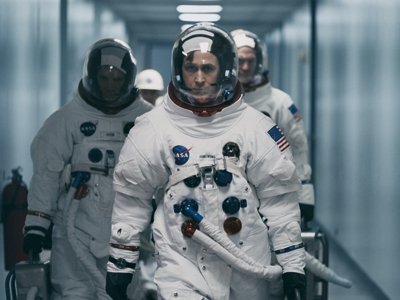 The director's goal is to give audiences a firsthand perspective of what it required to train for this type of mission, as well as be the one inside the first cockpits of this type. Alongside Singer and Gosling, Chazelle was inspired to capture just how visceral, difficult and terrifying this journey was…as well as the sacrifices required to become the first man on the moon.
The director's goal is to give audiences a firsthand perspective of what it required to train for this type of mission, as well as be the one inside the first cockpits of this type. Alongside Singer and Gosling, Chazelle was inspired to capture just how visceral, difficult and terrifying this journey was…as well as the sacrifices required to become the first man on the moon. "There are many other stories that tell about the moon landing, but I wanted to know what it felt like in all the years leading up to that first footstep on the moon"as well as what it felt like to be that man who put the first footprint on the moon," says Chazelle. "Only a handful of people in history have ever gone to the moon, and Neil Armstrong was first. Even more importantly, it's an emotional story of a guy who's trying to be a father and husband while undergoing this cosmic journey."
It was key for the filmmakers to expose the man who left the first footprint and reveal the truth behind his private persona. "One of the many challenges of trying to figure out how to do this story justice was that Neil was a very soft-spoken character who refused to conform to classic hero tropes," shares producer Isaac Klausner. "He didn't give a lot out emotionally; he was very reserved to the public. It was a big puzzle to figure out how to get real access to Neil and the way to tell the story…where you feel like you learn something about this man without betraying who he was."
With the support of the Armstrong family, Chazelle, Singer and the producers went to work bringing the American hero's story to the big screen. The film, which spans from 1961 to 1969, gives audiences a clear vision of what happened behind the walls at NASA"as well as a look inside the notoriously private Armstrong's personal life.
It was crucial for the team to note that, although he was deeply serious about his work, Armstrong had a sharp sense of humor. "He was great with his kids," offers Godfrey. "There's an aspect to him that we hope to reveal and convey"one of a fully rounded human being. The pressures during this decade were extraordinary, yet he kept his head down. It took that kind of perseverance and dedication to accomplish what he ultimately did. Damien has always been focused on obsessive characters, and you find in his movies a level of intense obsession that is very captivating from a dramatic standpoint."
After the passing of Neil Armstrong in 2012, the support of his family on this project was paramount. "I met with Josh Singer back in 2015 once I knew that he was working on this movie," says Rick Armstrong. "I wanted to see what approach they were going to take to decide whether or not this was a movie I wanted to be part of or not. I was impressed with the amount of research that Josh has done and the commitment to accuracy,"
After discussions with Chazelle, the Armstrong sons had the confidence to move forward. "I subsequently met Damien, and the same thing was true; that would be a real important thing for Dad," adds Rick Armstrong. "The fact that they wanted to try to make as accurate a movie as possible was a good thing. So, we wanted to make sure they had all the information they could get to be able to do that."
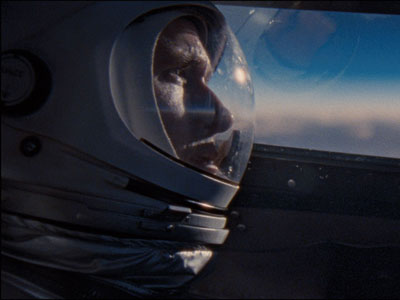 Gosling as Armstrong: The Performer Boards
Gosling as Armstrong: The Performer Boards Although Gosling and Chazelle collaborated extensively on La La Land, their pre-production and duration-of-photography work on First Man"extending to its postproduction"was on another level. "Ryan and I have more than simply an 'actor-director' relationship," says the director. "That's what accounts for the documentary feel of this film. When I first discussed First Man with him, I saw it as a 'mission movie.' He's the one who interpreted it as a story of grief."
Chazelle was very impressed by what his star contributed creatively. "Ryan found 'Lunar Rhapsody,' the theremin track Neil loved"and one that he played during the Apollo 11 mission," Chazelle recalls. "Plus, he discovered, 'Egelloc,' a musical that Neil wrote in college, as well as one of his interviews about the Earth's atmosphere"which became the basis for a speech that Josh wrote for Neil."
His producers knew Gosling could deliver the intense focus and quiet ferocity required of the first man to set foot on the moon, but they were surprised by how seemingly effortless it was for their star to embody a complex subject. "What struck me about Neil was how reserved, restrained, and un-showy he was," explains Chazelle. "He was not the prototypical cowboy or fast-talking pilot. He was a man of very few words"the quiet person who sits in the corner but who immediately takes gauge of everything: the smartest person in the room."
Chazelle's partnership with Gosling during La La Land allowed him to experience the actor's range, especially his deft sense of underplaying a scene. "Neil always insisted there was nothing special about him," continues Chazelle. "He said he was just one of many, and circumstances enabled him to be the first man on the moon. There was this normality to him, and Ryan's style is so subtle that he was able to do justice to that."
Perhaps one of the toughest critics of the production was one of the few people on Earth who knows the most about Armstrong. Fortunately, Gosling passed muster with Hansen. "I can't think of another actor who could do it better than Ryan," praises the author. "Ryan has some of the same introspective, cerebral, quiet, modest qualities that Neil had. But at the same time, he is a brilliant actor who can also take the Armstrong character and"through his own understanding of who Neil was"bring out elements of Neil that we might not have seen unless you were really close to him."
Hansen proved an invaluable resource to Gosling as he prepared for the role. "Ryan met Neil's sister June after I explained how important she was to my understanding of Neil's character, especially the effects of his little girl's death," shares Hansen. "Ryan sat in the same farmhouse that I interviewed Neil in and spoke to June and with one of Neil's boyhood friends. He listened to stories, asked questions, and has met Neil's sons, along with other family members. He has fully immersed himself in this role. He's certainly done his homework, and through the brilliance of his acting he's going to bring Neil Armstrong to life."
It was the intersection of Chazelle's take and Hansen's book that intrigued the actor. "I think as soon I learned what the moon was, I learned that somebody named Neil Armstrong walked on it," Gosling says. "He was synonymous with the moon but I realized, after reading James Hansen's book First Man, that I knew very little about either one of them. On an emotional level, I was surprised to learn just how much loss Neil and his wife Janet experienced before and during those historic missions. On a practical level, I don't think I fully appreciated how dangerous those missions were. How claustrophobic and frail those space capsules were: how primitive the technology was by today's standards."
As was his director, Gosling was drawn to just how difficult Armstrong and his cohorts' world was, and the tireless work it took to accomplish this juggernaut achievement. "I've always been interested in the extremes of a story," he states. "What is unique to this story for me is just how extreme those extremes can be. I can't imagine a greater duality than that between the intimacy and singularity of the Armstrongs' personal life and the infinite nature of space that it's intertwined with. These astronauts were using their comparative flashlight of scientific knowledge to contend with the infinite mysteries of the universe and, at the same time, taking out the trash and mowing their lawns back on Earth."
Time and again, Gosling has proven his commitment to his art"as seen in his preparation for his Oscar®-nominated role in La La Land, when he learned to play the piano in just three months. Likewise, during his preparation for his role in The Notebook, Gosling spent two months soaking up the culture of Charleston, South Carolina, and, just like his character, actually learned to build furniture.
In First Man, Gosling proves his dedication in time spent studying to portray the global icon. For the production team, director and star are inextricably linked in their shared passion for perfection. "Ryan has a commitment to doing excellent work," sums producer Bowen. "He is keenly aware of the legacy he's leaving behind and often, likeminded people find one another in material that they can connect with. It makes sense that Ryan and Damien want to work together. When you watch La La Land, the character that Ryan plays is someone who's obsessive about his craft…because Ryan's obsessive about his craft."
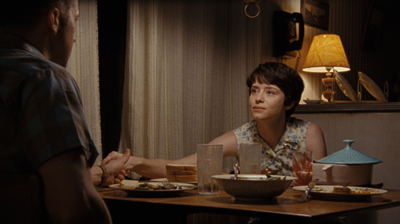 Gosling brings a special something to his roles, commends Bowen. "It's his humanity. It's his understanding of sentiment…and not sentimentality. So often people want to overwhelm you with their emotion. It's the truly great craftsmen who know how to dispense it in a way that keeps you leaning in."
Gosling brings a special something to his roles, commends Bowen. "It's his humanity. It's his understanding of sentiment…and not sentimentality. So often people want to overwhelm you with their emotion. It's the truly great craftsmen who know how to dispense it in a way that keeps you leaning in." The respect for the production's leading man extended to the countless crew members and support team who worked with Chazelle and Gosling during the shoot. Frank Hughes, who served as a Gemini and Apollo astronaut trainer, trained Gosling in a manner similar to how he worked with Armstrong back in the 1960s. "Ryan is dedicated to his craft," offers Hughes. "I'm amazed. We would spend time just looking at the control panels of the Gemini, and in starting out with the Apollo, and going through and learning every switch and its purpose. He'd get inside the cockpit and I'd show him where hands would be, where his eyes would scan when he's assessing a situation."
Gosling admits that becoming Neil Armstrong would have been impossible without the help of numerous collaborators. "I was very privileged to meet with Janet Armstrong before she passed away. I was also very fortunate to talk with Neil's two sons, Rick and Mark, and spend time with Neil's sister, June, at their farm in Wapakoneta, Ohio, where Neil was born. The Armstrong Air & Space Museum, and both NASA's Cape Canaveral and Houston facilities, opened their doors to me. There were also experts on set daily to advise on the specifics of every mission we were trying to replicate. I also had almost constant access to author James Hansen and his book First Man; a work of more than 700 pages of meticulous research. I've never had so much help researching a role or been involved with so many people who were so enthusiastic and happy to provide it."
Gosling's fascination for Armstrong and the men who were his cohorts permeated the production. "My first instinct in preparing for this role was to learn how to fly. Neil was flying before he could drive; it seemed an integral part of who he was, so I thought I should start there. At a certain point in my training, I was asked to force the aircraft into a self-imposed 'stall,' and I had a moment of clarity. This was a terrible idea. I understood in that moment why Neil was destined to be one of the world's greatest pilots and why I was not. Like many other astronauts, Neil began as a test pilot. It takes a certain kind of person to knowingly get into an aircraft that has never been flown and take it to its breaking point, for the sole purpose of finding its flaws so that we might move our understanding of aeronautics forward."
One of Gosling's biggest fans on set was the actress who plays his on-screen wife. "Ryan is warmth personified," sums Claire Foy, who portrays Janet Armstrong. "He doesn't have to work very hard at that, I don't think. He's incredibly likable as a person, and that's the thing with Neil. I don't think he was antisocial or rude; he wasn't conventional. He didn't do what everybody does, which is try and make everyone else feel great about themselves…and if there's an awkward silence, try and fill it. Innately, Ryan is kind-hearted and generous and warm and genuine…that's just naturally what he brings to the table."
First Families: Foy Leads the Supporting Cast
Among the family members portrayed in First Man are Janet Armstrong, played by Claire Foy, Pat White, played by Olivia Hamilton, and Marilyn See, played by KRIS SWANBERG. To prepare for her role, Foy explains that she, like so many of the cast, turned to author Hansen: "Jim gave me the tapes that he had of Janet from when he interviewed her. She was promoting the space program and supporting her husband, and she was sort of a mouthpiece for NASA as much as any of the other women were."
Unfortunately, Foy was unable to meet Janet Armstrong in person, due to inclement weather, which kept Armstrong from visiting set in Atlanta. Janet passed away on June 21, 2018, at the age of 84. The actress was impressed by the steadfastness of the woman she was portraying. "You had to take everything she said with a grain of salt because her external support was also heavily impacted by a time that was incredibly stressful, overwhelming and emotional for these women," Foy says. "Like all the astronauts' wives, they are in the background of history. Nobody spent time investigating what it was like to be them until much later on."
Born in Stockport, U.K., Foy admits she was aware of the Apollo 11 mission and that it was successful, but not much more than those facts. "Once I came to the United States I quickly realized the significance of what an important moment of American history it was and the lives of these men," says Foy. Speaking on why she wanted to take on a project like First Man, Foy reflects: "Sometimes, the quietest stories are the ones that are the most compelling. This is a story of a man who did something absolutely extraordinary."
For Foy, this story is not about just the mission, getting to the moon or the space program. "It's about Neil as a human being and what it means for a human to make such extraordinary strides for humankind," she offers, "and what pushes them to put their life at risk for the rest of humanity. It's worthwhile looking at the person who was at the center of that, as opposed to just thinking about what you've been fed for the past 50 years about what this person's done. It's about looking back and asking the cost to that person's life."
First Man marks the first time that Foy has worked with Chazelle, and she appreciated the director's focus. She reflects: "Damien knows what he's doing, and he gets everybody excited about it. He is so excited by this process of filmmaking and by creating things that it means you feel like you're invested in every part of it. He opens it up and gives you the authority of your character…and allows you to try different things. He will always keep going until he sees what he wants."
Her director explains just how easily Foy dovetailed into the production and embodied our heroine, the person whom he feels had the harder part of the Armstrong equation, going on the mission with Neil herself, all the while trying to keep the family together. "I initially started watching Claire, as many people did, on The Crown," recalls Chazelle. "This is a total 180 in terms of role"different country, different temperament, different era. She just nailed it so completely that people who knew the Armstrongs would come by the set and be suddenly a little gobsmacked for a second. 'Is that Janet?'"
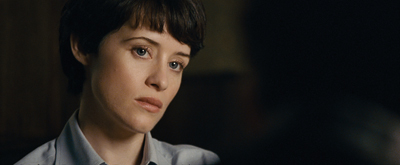 Her frequent scene partner was moved by her gifts as well. "The Armstrongs certainly upheld the image of the traditional American family publicly, but Claire never approached any of our work together as though that also defined Janet and Neil's private dynamic," offers Gosling. "She was constantly exploring new ways to communicate not only the complex dynamics inherent in any marriage, but also the experience of someone living something so singular, that it's hard to even imagine, let alone relate to."
Her frequent scene partner was moved by her gifts as well. "The Armstrongs certainly upheld the image of the traditional American family publicly, but Claire never approached any of our work together as though that also defined Janet and Neil's private dynamic," offers Gosling. "She was constantly exploring new ways to communicate not only the complex dynamics inherent in any marriage, but also the experience of someone living something so singular, that it's hard to even imagine, let alone relate to." To prepare for the role of playing Pat White, Hamilton explains that spending time with the families whose stories she was helping to tell was one of the more crucial aspects of preproduction: "The most impactful thing in my preparation was when I went to Dallas and met with Bonnie White, the daughter of Pat White. Then I spoke with Eddie, Jr., their son. I learned a lot from those interviews; just being in the presence of Bonnie was profound and very insightful."
The actress reflects the attitude of the entire production when she gives just how critical it was to get to know the survivors. "It's important that we represent the tight bond these families had while deployed to these different parts of the country for their training and while working at NASA," she says." The performer saw much in the story of a man who was misunderstood by the public: "A lot of people would like to say Neil was unapproachable and closed off, but with his friends and with his family he could be lovely person. We portray that sense of community and warmth that he shared."
Gemini Missions: Casting the Astronauts
When it came to casting the astronauts, filmmakers focused on finding strong character actors who could captivate audiences while creating a likeness to the people they would represent. "Each of them gives an incredible sense of intelligence and strength and competency," notes Klausner. "This is in keeping of the approach to treat this as though we are watching original documentary footage from inside these people's homes from the time of the Gemini and Apollo missions."
Project Gemini was the training ground for the moon missions of Apollo, essential in getting NASA ready for the moon landings. Ten crews flew missions on the two-man Gemini spacecraft, and the Gemini missions were flown from March 1965 to November 1966"between the Mercury and Apollo programs.
Among the nine men selected for Project Gemini were Neil Armstrong (Ryan Gosling), Ed White (Jason Clarke), Jim Lovell (Pablo Schreiber), Gus Grissom (Shea Whigham), Pete Conrad (Ethan Embry), Elliot See (Patrick Fugit), David Scott (Christopher Abbott), Buzz Aldrin (Corey Stoll) and Richard F. Gordon (Skyler Bible).
Clarke would play Ed White, who accomplished the first American Space Walk in 1965 during the Gemini IV mission. Destined for this role since birth, Clarke jokes, "I was born July 17, which was the day they set off for the moon. So my father and mother always used to tease me because my father wanted to call me Armstrong Clarke."
Much like Gosling, Clarke responded to Singer's screenplay and readily signed on. "After reading Josh's script, it was clear that this was always going to be quite a special film about, arguably, one the greatest achievements in mankind's history," the actor offers. "It was always this sense of achievement"the sense of what we are capable of"and Ed was a crucial part of that."
Gosling wasn't the only actor lucky enough to speak with the families of the astronauts portrayed in the film. Clarke also had an opportunity to sit down with the White family, including White's son Ed Jr., and his daughter Bonnie White (now Bonnie Baer). "There's quite a lot of material on Ed out there," the actor says. "He was the first American to walk in space, so there's that footage. Whether it's Rick and Mark, whether it's Bonnie and Ed Jr., or the guys who showed us around NASA, we felt special. They're including you in something very precious to them. I feel very lucky that they were willing to open their doors to us."
Brought aboard to portray Jim Lovell, another one of the nine Gemini pilots, as well as back-up commander to Neil Armstrong for the Apollo 11 lunar landing mission, was Pablo Schreiber. Lovell became a household name after Tom Hanks' portrayal of him as the commander in Apollo 13.
In First Man, we primarily see Lovell as the capsule communicator during the Gemini VIII mission with David Scott and Neil Armstrong. Schreiber appreciates the fastidious detail that his director brought to every facet of the work. "One of the great things about this project has been my education in the whole program," he gives. "Damien is one of the most vigilant and prepared people I've ever worked with. As soon as I was on board he sent me a long email with all of the vast research he had done, which was invaluable in terms of getting a sense of the time period and these missions."
Producer Godfrey explains that Gus Grissom was ultimately the astronaut that most people thought would be put in command: "They felt like he was the guy. At the time, the Apollo 1 crew was perceived to be the ones who would ultimately be going to the moon."
In Shea Whigham, the team found their Gus. "Gus was gruff, tough, old-school. He almost growled his words out," continues Godfrey. "Shea has that quality and that swagger. We wanted that as a counterbalance to the other characters who were from the next generation."
Having grown up in Florida, Whigham explains he was familiar with the NASA program; in fact, he was able to watch the launches near his home: "Oddly enough, I grew up about 30 miles outside of Cape Canaveral. I had the chance to see every launch of the Space Shuttle." Spending his youth watching the launches instilled a curiosity in Whigham. "It was every kids dream to look at the moon and say, 'I'd like to try to go there at some point.'"
To play the role of Pete Conrad, who served as commander on Gemini XI"and continued on to the Apollo program as commander of the Apollo 12 mission"becoming the third man to walk on the moon, was Ethan Embry. For the actor, this was the first chance he's had to portray a historical figure. "There's a biography written about Pete Conrad called 'Rocketman,' that I read a few months before we started," says Embry. "Being able to sit and read 300 pages of the factual information that make Pete who he was made my job easier but more terrifying at the same time. You know exactly who he is, so you want to do the best you can to portray that."
In describing the role of the young astronaut Elliot See, Patrick Fugit offers: "We've got astronauts like Pete Conrad and Ed White who are sort of the jocks of the space program, and then Neil's in there a bit isolated as a civilian. Neil and Elliot were the only civilians in the new nine astronauts that came in for Gemini in the beginning, so they create a rapport that isn't common between Armstrong and his colleagues."
Fugit appreciated that Singer's script explored this unique friendship, forged between the two men who shared much in common. The actor notes: "There is a particular focus on the camaraderie within the neighborhood that the astronauts live in. In such a competitive environment, it's heart-warming and important to show that these men had each other's backs and that there was a brotherhood; they were like a big family."
The primary Gemini mission highlighted is David Scott and Neil Armstrong's ground-breaking Gemini VIII mission where they were the first to link two spacecraft together in Earth orbit. This milestone would prove vital to the success of future moon landing missions.
To play Scott, Armstrong's co-pilot for the Gemini VIII sequence, the production brought on actor Christopher Abbott. Due to a craft malfunction, Gemini VIII began to spin uncontrollably during the docking sequence and Scott lost consciousness; however, thanks to Armstrong's quick thinking, he was able to stop the spin and return the vessel safely back to Earth.
Admittedly Abbott wasn't familiar with the Gemini program prior to his research for the film, but in his research he quickly understood the gravity of the event. "For the Gemini VIII mission, I didn't know until I researched how important it was and how much the Gemini VIII flight held the future of NASA in in the balance," offers the actor. "While it wasn't technically a full success, the fact that they recovered and got back safely"and were able to dock with the Agena"propelled NASA and these astronauts to continue their mission to the moon."
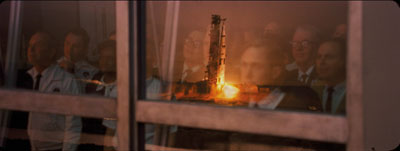 Project Apollo: Life after Gemini
Project Apollo: Life after Gemini The mission objective for Apollo 11 was to complete a national goal set by President John F. Kennedy on May 25, 1961: perform a crewed lunar landing and return to Earth. From launch to Earth landing it took 8 days, 3 hours, 18 min, and 35 seconds for these three Apollo 11 pilots to make history. On July 20, 1969, they did exactly that.
Apollo Pilots
Many of the Gemini pilots went on to Project Apollo, designed, among other goals, to carry out a scientific exploration of the moon and achieve pre-eminence in space by the U.S. Among the Apollo 1 pilots were Gus Grissom (Whigham), Ed White (Clarke) and Roger Chaffee (Smith). Sadly, one of the worst tragedies in the history of spaceflight occurred on January 27, 1967, when the crew of Grissom, White, and Chaffee were killed in a fire in the Apollo Command Module during a pre-flight test at Cape Canaveral. They were training for the first crewed Apollo flight, an Earth orbiting mission scheduled to launch that February.
As a part of their tour of Kennedy Space Center, the cast was able to see the launch site of Apollo 1, which proved one of the most poignant moments of production. "It was a very sombre experience," recalls Clarke. "NASA, along with Bonnie White and Ed White Jr., have included us in something that is very precious to them. As well, the gentleman who toured us around worked there back then." He sums the cast and crew's thoughts on that day with: "I feel very lucky they were generous enough to share this memory with us and for NASA to open their doors."
Among the Apollo 11 pilots, those whose mission was the first lunar landing, were Commander Neil Armstrong, Command Module Pilot Michael Collins and Lunar Module Pilot Edwin "Buzz" Aldrin. To cast the Apollo 11 crew, filmmakers again focused on talent-meets-a likeness to the astronauts being portrayed.
"I adore Corey Stoll, he's a tremendous actor. He actually looks like Buzz," laughs Godfrey. "But Buzz had this irascible quality that rubbed people the wrong way, just because he had a sort of outsized personality. And yet he also was extremely intelligent. Neil saw a quality in him that he believed was the perfect guy to be in that cockpit with him. But Corey has both, he has this fierce intelligence but he also has this kind of rascally twinkle in his eye, that you're not quite sure what to make of him. And the thing that we wanted Buzz to do is to kind of keep everybody a little bit off balance."
"When Buzz enters into our movie, you've got this calm group of friends. Then Buzz comes in with a lot of energy and personality that knocks things off balance a bit. So that, we're letting Corey kind of bring that energy to it," says Godfrey.
To play Mike Collins, who had the critical role of Command Space Module pilot, was Lukas Haas. Describing his experience on the project as a once-in-a-lifetime opportunity, Haas says: "It's insane how much I've learned. Space travel is a fascinating subject, and I feel blessed to be a part of this project. I have new heroes after working on this film and a new respect for where humanity lives in the universe."
Inspired by Mike Collins' book "Carrying the Fire: An Astronaut's Journeys," Haas decided to reach out to Collins. "I wrote Mike a letter because I loved his writing so much. To be able to learn about his experience through his book was touching. Rather than try and get a phone call with him or meet him in person, I just figured I'd write him. He wrote me back this hilarious letter about how he wished that Mickey Rooney had played him," laughs Haas.
Haas was surprised when Collins agreed to come to set on the last day of filming at Kennedy Space Center in Florida. Collins, along with Buzz Aldrin, visited set to observe filming and finally meet the cast playing them. "Mike is as pleasant and funny in person as he is in his writing, and getting to meet him on our last day of filming was one of the most profound moments of my life," adds the actor.
"It was a surreal experience to say the least," adds Stoll.
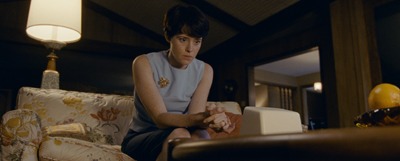 Commanding the Men
Commanding the Men The duo in command of these brave few were director of flight-crew operations Deke Slayton, played by Kyle Chandler, and Bob Gilruth, played by Ciarán Hinds. "Bob was the first director of the space center, and he's the boss who oversaw Deke," notes Chandler. "Deke's job was to help choose the men for the missions, to rotate them in and out based on skills." He pauses. "Bob had the final word over what my character may say, and Ciarán is just a fantastic peer."
The need for the performers to demonstrate unequivocal authority was not lost on the producers. "Kyle has the stature of both a father and a coach," states Godfrey. He laughs: "You feel like that he could also punish you. You needed another grown man who felt a step above all these other grown astronauts, in terms of authority and maturity. He feels like a guy who would have lived in this time: spit-and-polish, straight collar. As well, Ciarán has that quality where you don't quite want to cross him. He feels authoritative, but not authoritarian."
Slayton and Gilruth were among the officials were in charge of acknowledging when the mission received a green light"the weight of many lives were in their hands. As there is a chance they cannot bring their boys home, the stress Gilruth and Slayton carry while reading the White House's potential moon-disaster speech was overwhelming"a responsibility they took with might gravity.
Special Extras Casting: Art Imitates Life
Extras casting director Rose Locke worked with Chazelle to satisfy his push for authenticity. In turn, she cast such names as Chris Calle, son of sketch artist, Paul Calle. Paul Calle was known as one of the first eight artists chosen by NASA in 1962 to document the American Space Program. In a Space Art career spanning more than 40 years, Calle covered Mercury, Gemini, Apollo and Space Shuttle Missions.
Paul was the only artist present with the Apollo 11 crew with Neil Armstrong, Buzz Aldrin and Michael Collins the morning of July 16, 1969, as they prepared for their launch to the Moon.
His sketches of the Apollo 11 crew breakfast and Suiting Up stand as a visual record of the activities of that morning, saved in a family sketchbook in the possession of his son Chris Calle. Bringing the sketchbook to work in the scene in the movie, Chris Calle played his father, while mocking up sketches during the scene this time with Gosling, Stoll and Haas.
Rick Houston, the author of "Go, Flight! The Unsung Heroes of Mission Control, 1965-1992" also played a role in mission control for the tense Gemini VIII flight sequence. "We play a role in the mission-control scene when everything went wrong in the Gemini VIII flight. Being a part of that and seeing the way it was put together was exciting and unlike anything anyone's ever seen," says Houston. "Ciarán Hinds and I talked quite a bit about his character of Bob Gilruth. Kyle Chandler, who played Deke Slayton, had quite a few questions about how to do various things in mission control."
Mark and Rick Armstrong were not only involved with the project from the film's inception, but they also had roles in the mission control scene. "I play the character of Paul Haney, who was the mission control public affairs officer. Essentially, he was the member of the press that was inside NASA, and an employee of NASA" says Mark Armstrong.
Impressed by the detail Chazelle had put into the project, youngest son Rick Armstrong explains he felt his father's story was in good hands. "I play the flight operations director in mission control in the Gemini VIII sequence," explains Rick Armstrong. "I initially became part of the movie, because I wanted to do my part to see that it was as accurate as possible," he says. "But after meeting Damien and the producers"and Ryan and Claire and Josh and other folks that are on the project"I found out that they cared just as much as I did about the accuracy." Author Hansen had a cameo role played Dr. Kurt Debus, Director of the Kennedy Space Center, in the scene in which the Apollo 11 astronauts walk toward the spacecraft for the launch. In the same scene, Bonnie Baer (Bonnie White), daughter of Ed White also makes a cameo appearance.
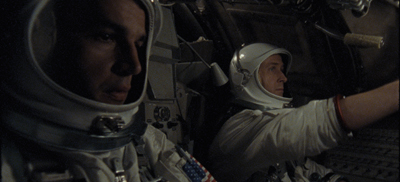 NASA Opens Its Doors: Astronaut Bootcamp
NASA Opens Its Doors: Astronaut Bootcamp Having done extensive research into NASA and the missions leading up to Apollo 11, Chazelle was familiar with the operations at Kennedy Space Center in Cape Canaveral, as well as Johnson Space Center in Houston. "It's an amazing thing to experience, and I wanted to make sure everyone who is playing an astronaut in the movie got to experience that first hand," he offers.
"The training that went into getting up into space are incredibly visual events," adds Godfrey. "NASA has been intimately involved in the movie they've opened their doors to not only the places but the people that were there."
For Klausner, the key element of these pioneering astronauts was that they spent an extraordinary amount of time training and preparing for these missions. "One of the biggest challenges for an actor stepping into these roles"especially for the cast members who are seen in missions"is the ability to act with a level of confidence, and comfort and knowledge, that the astronauts had without nearly the same number of hours of training," says the producer. "Some of these astronauts are guys who could probably have flown blindfolded. They knew where every button was of several hundred panels."
Finding ways to give the actors prep time to access research, speak with experts and sit in simulations was crucial. Gosling, Clarke, Fugit, Embry, Whigham, Schreiber, Haas and Stoll all went to Johnson Space Center in Houston,
as well as Kennedy Space Center in Cape Canaveral for astronaut training. "The biggest influence going into this film was the NASA employees' enthusiasm and love for the world that they live in and the world that came before them. Going to the moon was their seminal moment in history. I've got to say that literally every single one of the people that we met knew this story inside out," shares Clarke.
While visiting NASA's Johnson Space Center, the First Man cast members were able to experience a behind-the-scenes view of NASA that encompassed both the past and the future. Through a series of briefings and hands-on activities, this group gained a first-hand perspective of astronaut training, flight control and engineering critical for flying humans in space.
From the chance to get out in the Mars lunar vehicles, it set not only a sense of awe, but made the words of Singer's script and the upcoming shoot so much more real. "We got to practice in simulations of zero and lunar gravity," offers Klausner. "We got to see where the astronauts worked and lived, what they ate, how they trained and practiced"a lot of essential tools for helping the actors get immersed in these roles."
After visiting NASA, Clarke explains the space program no longer felt unobtainable; the experience made the endeavor tangible. "It's not like some fantastical imaginary place, it's very practical, and they were lovely and generous and smart and dedicated. They imparted this sense of the importance they give to their job."
The cast also happened to travel to Houston while Johnson Space Center was setting up for their traveling exhibit "Destination Moon: The Apollo 11 Mission," which displayed the actual Apollo 11 Command Module, "Columbia." Upon seeing in person the living quarters for the three-person crew during most of the first manned lunar landing mission in July 1969, the cast was astounded by the tangible history.
One of the more interesting exercises for the cast was their time spent a on the anti-gravity apparatus. By standing upright in a harness, they were able to simulate what it feels like to walk on the moon. Reminiscing about his experience in astronaut training, Schreiber reflects: "When I got this job, it was one of those moments in life where you realise that you became an actor for a specific reason: it's to get to be a child for the rest of your life. The idea that I would get to play an astronaut and go to NASA, both Houston and Cape Canaveral, and have complete behind-the-door access to all of their training tools is a childhood dream."
Although disappointed the cast had to miss out on riding in the legendary (and aptly named) "vomit comet," Schreiber states that astronaut training was still an opportunity of a lifetime. "The only real life way that you can simulate anti-gravity is to do this thing called the vomit comet, where they take you up in the plane and descend at a certain rate for six seconds at a time. You get a sense of real weightlessness; that's the only way unless you go into space. We didn't do the vomit comet, but to get to do those two robotic simulation training programs was just amazing."
"You see those images your whole life, the launch pads and the big crawler taking the shuttle to the launch pad," echoes Haas. "To be there and see it and experience it in the way was awesome."
For Chandler, just seeing a Saturn 5 rocket laying on its side and being able to walk its more than 100-meters length gave him an idea of what these guys were climbing into. "We saw a lot of different things that give you a hands-on feel," states the actor. "Being that close, to be able to touch some of the things and to be in the spacesuits allowed our imagination to settle into these characters when we got on set."
Admitting researching for other films or shows can feel like work, Stoll explains this exercise was different. "There are certain projects where research is a bit of a slog, but this was so much fun," he gives. "There are so many great books and movies and documentaries, so it's been fun digging deep into the minutiae of the technology and the people involved. I grew up taking space flight for granted, but now we are able to go back when this was all brand new, and they had to invent everything."
Chazelle encouraged all cast playing an astronaut to experience NASA first hand, and he also sent each cast YouTube videos of the actual people they'd be portraying. This allowed the talent to hear cadence and affectations of those speaking or being interviewed. In addition, the director provided a hand-selected list of recommended movies and books.
Among the book recommendations were "Carrying the Fire" by Mike Collins, "Deke!" by Deke Slayton and Michael Cassutt, as well as "First Man" by James R. Hansen. Movies Chazelle recommended included For All Mankind, Moonwalk One and Mission Control: The Unsung Heroes of Apollo, among others.
"It was great to have Damien there to curate the material, because you can get lost in the weeds," adds Stoll. "Buzz has written numerous books, and I went through some of that material to get a sense of his voice. We all went to Johnson Space Center in Houston, and there's this whole avalanche of technical information, as well as anecdotes about the astronauts and the people in mission control. It was helpful to be directed towards what was important in telling this story."
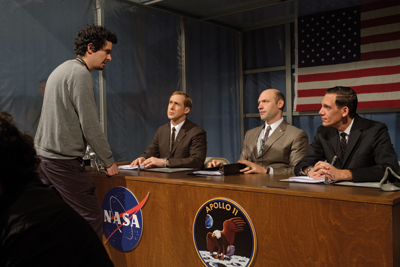 The influx of information continued throughout production, as Chazelle and filmmakers lined up technical advisors to assist in re-creating each mission as accurately as possible.
The influx of information continued throughout production, as Chazelle and filmmakers lined up technical advisors to assist in re-creating each mission as accurately as possible. Among the tech advisors on set were Christian Gelzer to assist in all LLTV (Lunar Landing Training Vehicle) work. Gelzer served as Jacobs Technology's Chief Historian for the NASA Armstrong Flight Research Center. As well, Joe Engle was brought on to assist in all X-15 spacecraft work. Engle served in the United States Air Force and was one of twelve X-15 test pilots along with Neil Armstrong.
Frank Hughes, retired as NASA's Chief of Space Flight Training, assisted with astronaut training and mission control, as well as Gemini and Apollo 11 work. Hughes was a computer and guidance navigation and control systems expert during Apollo training and he worked closely with Apollo 11 astronauts.
Al Rochford and Ron Woods assisted as suit technicians. Woods supported the training and pre-flight suiting activities for Apollo 11, suiting up Mike Collins, while Rochford served in the same capacity suiting up the likes of John Glenn Jr. for the Mercury-Atlas 6 Earth-orbital space mission. Al Worden, who was the Command Module Pilot for Apollo 15 (the same job as Mike Collins), assisted in Apollo 11 work. Lastly, James Bilbrey" NASA/Marshall Space Center videographer and editor"assisted in tracking down archival footage.
All advisors were in constant communication with Chazelle and his fellow producers in pre-production and were on set during the filming of the scenes"under their respected area of expertise. "It was amazing, the people we got to meet, the different astronauts, the information, the personal stories from those who were there on the day. These are things that you just can't make up in your mind that you can spin a lot of tales off the truth as you're doing your work," says Chandler.
Flying into Space: Designing Modules and Capsules
Production designer Nathan Crowley admits that there's a grittiness and reality that he likes to focus on in his work. "I will push to do things in camera for real," he sums. "For instance, we used miniatures on this film. I'm not trying to reinvent the wheel; we're just using old school methods with modern technology."
Upon meeting for the first time, Crowley and Chazelle clicked over their shared opinions of design. "The minute Damien indicated that he wanted to only do this movie in the camera, I was in," says Crowley. "I have a love of physical objects and scale and he wanted to get it in the camera. That is actually very difficult but a fun challenge"one we were both willing to take on."
It was important to Chazelle to show the danger of pioneer going to space in, as Crowley puts it, "in tin cans being fired up." He had no interest in showing the glamour of NASA rather this hard-edged fight to get to the moon. The designer reflects: "These men had so much knowledge, but there was still so much unknown. They were explorers, and the fact that they would spend days in these cramped conditions interested me."
When the collaborators first spoke in pre-production, Chazelle offered that he wanted to juxtapose the claustrophobia with the vast expanse of space. Utilizing NASA's resources was pivotal to get the design as accurate as possible. "NASA opened their doors to us," says Crowley. "I went to Kennedy in Florida and analyzed the Lunar Lander up close, as well as the Gemini capsule; we went to Houston to look at the LLTV in detail, and we studied all of the manuals and other information we could get; that allowed us to re-create what it felt like being trapped in these things.
"I say trapped because it's tiny; these capsules were like being in sardine cans," adds Crowley. "NASA's goal was to constantly improve on their capsules and their missions, so there is not just one blueprint to reference with all of the answers they were constantly evolving. The best way to understand the design was to stand right next to it with someone who flew it or trained in it."
Chazelle's pursuit of authenticity led them to analyze diagrams and dashboard instruments, as well as meet with experts and enthusiasts, in addition to collaborators at NASA. There were many moments when the production designer and director felt like detectives out to figure out each piece of the puzzle.
Some filmmakers might sacrifice the integrity of the spacecrafts by changing the scale in order to satisfy filming needs or to make the actors more comfortable, but this was not Chazelle's intent. Gemini and Apollo trainer Frank Hughes discusses how that would not be done under his watch, and how he was so impressed by what he saw: "I brought with me my own library of things that we used at the time"check lists and books that tell how we did it.
"They fell into place these guys! I got here with my treasures, and they'd done it already. Man, they got it. It's so small the things that I had to suggest to change. They did a hell of a job. Being in that control center felt like I was back at home in Houston. Then, in the spacecraft, you're surrounded by the thing. It was all really well done."
A stickler for every single detail, Crowley firmly believes that one should never exaggerate any craft more than 10 percent. For Gemini, his team tried to keep it the exact size but it caused problems with the cameras. The solution was this jigsaw puzzle of a set that came apart. In fact, they had to break the seats in half just to get the camera in the capsule with them.
It was necessary to make small adjustments for the actors, as a few of them were taller than the astronauts they were playing. "For Apollo 11, we went about five percent over the size, and then the X-14 we were the real size," Crowley explains. "But we had to lower the seat a little because Ryan is taller than Neil, and his helmet was too close to the roof."
It wasn't just the building that would prove tricky. "There are so many logistical items that go into creating these things," adds Crowley. "For instance, the challenge with the Lunar Landing Module was just building something of that size…but then figuring out how to transport it to the location. As well, we had to make it wind- and snow-resistant because"as it turned out"on our moon we got snowed on."
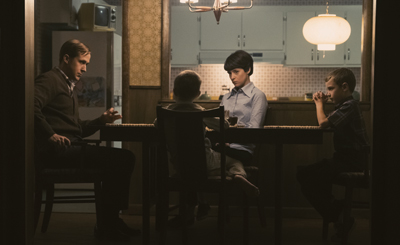 Reflecting the Sun: Creating and Filming the Moon
Reflecting the Sun: Creating and Filming the Moon Although familiar with re-creating space after working on films like Chris Nolan's Interstellar, Crowley explains when addressing the film's biggest design challenge: "this is my first time going to the moon." He reflects: "When I went through the script, I knew this movie was going to be challenging but I got through X-15, Gemini, Apollo, landing on the moon. We have all these missions to get through, which, I naively thought 'I can deal with those.' Then we have to do the residential neighborhoods, and NASA and Houston and life at NASA"and we have to bridge these all together but it was something I knew we could handle."
"But the moon is something I pushed to the back of my mind for a long time because it was such a challenge to figure out how we were going to fake this," he continues. "I didn't have the answer right away, but I knew we either needed a quarry or cement"and somewhere that was vast enough that could give us the scale of the moon. I knew the quarry would be the best option, but to match the moon's surface we needed a gray quarry, which is rare."
Sometimes a place can change your problems, laughs Crowley. "We were lucky enough that Atlanta happens to have gray quarries. Through the friendliness of the industries that work here, we found our moon at the Vulcan Rock Quarry in Stockbridge, just south of the city; they let us sculpt the landscape to our direction."
For Chazelle, the search for the perfect moonscape was an exhaustive one. "We had the idea that instead of shooting the moon on a stage, we would shoot outdoors and at night; that would allow us to create sunlight with a giant film light. So we started looking around for outdoor possibilities in and around Atlanta. It took us a while to find this quarry. We looked at a bunch of quarries that either weren't big enough or weren't quite flat for long enough. But we found this one and we were able to sculpt it a bit."
To tell the emotional story, Chazelle teams with director of photography Linus Sandgren. Not surprisingly, they found lighting the expansive moon to be an incredible challenge, "Nathan designed the moon outdoors in a big quarry, and the set is enormous," gives Sandgren. "It's much bigger than any other moon set used in production. Because of that, we need to light it all up. To do that, we need a lot of lights, but we didn't want to have many lamps because you only want to have one source as the sun and one shadow. That gave us a challenge to try to create a very strong light source that is single."
Only one solution, and that is to find the strongest lights on the planet. "We talked to David Pringle, who made the 100K Softsun lights," notes Sandgren. "We asked him if he could help us develop a 200,000-watt lamp, which he did. This 200,000-watt light is just enough for us to shoot in this big space."
The vastness of the space was in stark contrast to the tight quarters from which the men were about to emerge. "The Apollo 11 is about 10 feet in diameter, three men were there for over a week," says executive producer Merims. "It's incredibly claustrophobic and incredibly tight quarters. Damien wanted to simulate how hard that journey was. When Buzz and Neil landed on the moon and the moon is infinite beyond, it's a big contrast. When the two walk out onto the moon, we switch to IMAX, 65 millimeter, which is the largest available format in film. That allows audiences to feel it and be there with them."
Sandgren likens looking at the moon this close as "like looking at the land of the dead…something that we've never seen before." He pauses, and explains how that informed his choices as DP. "It's something much more surreal than real world. Because of that, we thought that if you shoot intimate scenes on 16 millimeter, then you come out onto the moon and all of the moon is IMAX; that has a much greater negative and much more detail."
Producer Bowen appreciates that visceral switch. "When Neil Armstrong is going up in Apollo, you're seeing that with 16 millimeter. You are seeing it shake. Hopefully, you're feeling what it must've been like to be there. If we pull off this immersive experience, this great story is finally going to get told."
Interestingly, the lenses the cinematographer and Chazelle chose for the moon sequence are the same lenses Armstrong and Aldrin used on the moon when they took the infamous still photos. Says Sandgren: "They did with those Hasselblad cameras and six-by-six centimeter negatives; that is the same film stock and film we've used to shoot the moon."
To re-create the famous moon landing, their team looked a lot at those photographs that they took on the moon. They were very precise replicating the real photography. That extended to looking at the height of the sun angle. For example, if the sun angle at one location was fifteen degrees in the original shot, they would ensure the length of the shadows are the same in the film.
Production shot the moon sequence in the last few weeks of filming in mid-January, with most of the movie under their belt. "When filming the moon sequence, we were closer to the end of our shoot. By the time we came here, we sort of felt the way our character feels…knowing all the stuff that led up to this moment," says Chazelle.
When discussing how he captured the famous first steps on the moon, the director says: "We've tried to be as authentic as possible and to get the little things right"the little details that make the original footage so exciting and moving, but we've also tried to put a stamp on it that's unique to the movie. We didn't want just a re-creation, but hopefully fill it with some of the emotion the movie's built up."
For Godfrey, it's all about building the emotional journey so that the success of landing on the moon becomes an emotional release for not only the characters but the audience. "You want to create such a sense of anxiety and tension"dangers that we don't realize that Neil and the other astronauts face," he says. "From the second that ship touches down, it's just this release of tension."
This isn't just a release of tension for the audience, but for the actor portraying the man who took that rare walk. Gosling explains: "We arranged it so that I was able to hear the original recordings between Neil, Buzz and mission control as I was taking those first steps. It was very surreal to experience that moment in a way that Neil may have. Also, an exciting element to the POV style in which that scene was filmed is that the audience will now get to experience that moment as Neil may have as well."
Filming the moon sequence during mid-January in Georgia was a gamble with the weather, and it turned out to be a low of 17 degrees Fahrenheit some nights on the moon set. "On our moon was quite cold," says Chazelle. "The real moon varies between super-hot and super-cold, so maybe a little hostility of the elements is appropriate."
"The natural challenges we've had is that when it suddenly started to snow, we had to break for a little bit and move back to stage for a few days. But when we returned the weather was pretty good; it wasn't so windy, and the flag stood still." Laughs Sandgren: "It's just like the real shoot on the moon."
Back to Houston: Mission Control
Having the ability to see mission control prior to filming allowed the actors playing the astronauts to prepare themselves for what to expect in filming. As well, they learned the protocols inside the room where the famous words, "The Eagle has landed" echoed through the walls.
One of the design team's biggest fans was advisor Frank Hughes, who saw it all the first time during the Apollo 11 flight. "The mission control set is marvelous. It's set up just like it would be in the real deal in Houston, Texas and it's just great," he commends.
"We saw mission control what it was then and we got to see the mission control now which is active, You go in there and you see the space station orbiting the earth and they're talking as you're standing there it was amazing," says Haas.
"What drew me to this room for the very first time when I visited it in the summer of 2012, I was just struck by the history that had taken place there. But when I walked in, all the consoles were dead, there was no electricity, so they were all dark; the carpet was bunched up and dirty, so it was very dreary," says author and expert Rick Houston.
"So when I walked in here on set on the first day of rehearsals, it was an emotional moment. I had never seen mission control like this. It took me a few moments to collect myself and make myself realize that this wasn't the real mission control room. I looked around and started noticing things here and there that were very accurate. I was very impressed by the lengths that they went to make it historically accurate."
For Houston, that attention to detail on Chazelle's set mattered more than you'd think. The filmmaker and his team were honoring the sacrifices made by those on the ground whose priority objective was to keep the astronauts safe.
Sharing some of his findings about mission control, Houston explains: "the thing that impresses me most about the people who worked in mission control was their dedication to the mission first. Their number-one goal was to bring the astronauts home safe." The author states that one might be surprised to find "they had an intellectual arrogance that wasn't egotistical; it just meant that they had confidence in themselves to be able to get the job done and to get the astronauts home. They were able to do that in the case of Gemini VIII and Apollo 11."
"One of the NASA techs told me that when he walked in to the mission control set, it brought back every possible memory. He was just flooded with memories. That's the best compliment you can get," says Crowley.
Roll, Pitch and Yaw: Training Tools
Additional built sets Crowley and his crew constructed included the Lunar Landing Training Vehicle (LLTV) and the Multi-Axis Trainer. "The LLTV is a machine that in this day and age we would never risk putting people in," the designer explains. "When Neil knows that he's going to be the guy that lands the lunar lander, the only way for him to practice is to get into this cockamamie testing mechanism. He barely ejects in time before he crashes it. Then he went back and did it many more times because it was the only way to train."
Chazelle's team was able to reconstruct the LLTV and the multi-axis trainer thanks to NASA's support and archival photos. In Houston, they had the chance to look at the LLTV in detail and were able to take those findings back to the shop to try and re-create these apparatuses.
"When I found out they wanted to do the multi-axis trainer, practically, I knew that one was going to be extremely challenging, and not something that just anyone could build." proclaims special effects supervisor Jd Schwalm.
Although the multi-axis trainer's use was suspended after the Mercury program, filmmakers chose to incorporate it into First Man to show the excruciating training these astronauts went through. "It's an extremely complex device that hadn't been built since the '60s, and nobody even knew how it worked," says Schwalm. "We reverse engineered that from photographs, and it was one of the bigger challenges and the most fun on the show."
The multi-axis trainer was designed to simulate the astronauts spinning out of control in space on all three axes: roll, pitch and yaw. Schwalm walks us through the process: "They would have a visor over their heads so they couldn't see where they were, or orientate themselves. Then they'd have to get out of the spin on the three axis, one at a time. So they'd figure out how to get out of the spin, and then essentially get them comfortable with the situation of being out of control in space, and regaining control."
The trainer's use was later suspended for several reasons, one being that the roll astronauts experienced on earth with gravity did not accurately portray the weightlessness and anti-gravity they would experience in space.
Creating Domesticity: Building the Armstrong Home
Crowley teamed up with locations scout Kyle Hinshaw to find the perfect 1960s neighborhood to replicate the Armstrong's El Lago, Texas, home. This was the house in which they resided during Armstrong's tenure at Johnson Space Center in Houston.
. Although Atlanta is a city built in the middle of a forest"with beautiful hills and sits at the southern tip of the Blueridge Mountains"Crowley and Hinshaw found a flat neighborhood that would best represent the Texas neighborhood.
"The whole street played out like El Lago in Houston. It was that sort of '60s architecture, and it was relatively newly built," gives Crowley. "So the street could play this safe haven for the film's astronauts and their families."
After finding an open lot in the middle of the neighborhood, Crowley and his construction team began re-creating brick by brick the Armstrong home. It even included a heated swimming pool in the backyard; an almost perfect replica.
To satisfy Chazelle's desire for authenticity, Crowley settled on building the Armstrong house from the bottom up. After filming in the Roswell neighborhood for over two weeks, the crew quickly became embedded in the neighborhood. They were welcomed as family with neighbors passing baked goods around to crew members in the middle of a night shoot.
The majority of filming took place in Atlanta on various locations and stages. Production then spent one day filming at Kennedy Space Center in Houston to utilize the crawler, which was the vehicle that transported the Saturn 5 rocket from NASA's Vehicle Assembly Building (VAB) to the launch site.
Production then traveled to Edwards Air Force Base in California to re-create Armstrong's X-15 flight take-off and landing.
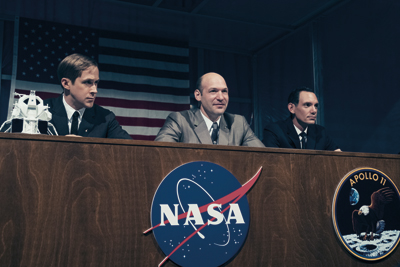 Aim for the Heavens: Photography and SFX
Aim for the Heavens: Photography and SFX The screenwriter was a fan of working with his filmmaking team, especially the unique skills of director of photography Linus Sandgren. "As a writer, you can't do better than having Damien and Linus shooting your movie," says Singer. "The only way you can do better is having Linus shooting this cast. The work Ryan and Claire and Jason and Olivia do at home is beautiful, and then to have Corey, Ryan and Lukas in the Apollo 11 spacecraft"it's just remarkable. It's a wonderful ensemble."
"First Man is both a very grand story, but it's also a very intimate personal story," reflects Sandgren. "We wanted the film to feel much more intimate in certain scenes. On those scenes, we decided to shoot it in 16 millimeter, which is grainier and feels more poetic. As the story progresses"and we get more into that industrial NASA world"we go into 35 millimeter and a harder contrast."
Sandgren reteams with Chazelle after working together on La La Land. The filmmakers raved about their DP. "Linus operated every shot," explains Godfrey.
"Because we're going for the style, it's all handheld. You want stolen moments, things to be a little messier than they are, on a dolly or with Steadicam. It's also allowed Linus as a DP and a camera operator to become much more connected to the actors. He's right there with them through all of these scenes and was on a headset the whole time with Damien"who could say, 'Zoom in to him, pan over here.'"
For some it would be considered an impossible feat to shoot all of the missions leading up to the moon landing in camera, but for Chazelle and fellow producers it was a challenge they were willing to fully embrace. Utilizing ground-breaking technology in the effects field, with the help of NASA's archival footage, filmmakers began to brainstorm. "Eight months before we started shooting, we began discussing how we might use the amazing beautiful archival footage that NASA accumulated over the various Apollo missions," explains Merims.
Hesitant to use just the archival footage, because of the quality and the limitations of the camera angles, filmmakers came up with a unique solution utilizing technology that has only been used in a handful of films, but never at the scale needed for First Man.
The team decided they would re-photograph the archival footage through the use of the LED technology. "A number of years ago, people started using LED technology to simulate the backgrounds that you'd see through cars or through trains," states Merims, "so we thought we could use the archival footage projected on the LED screen through the windows of the crafts. When we're in space on Gemini VIII and Apollo 11, there's all this beautiful footage that we acquired through NASA's help…and then repurposed to project on the LED."
Now that the backgrounds were in order, it was up to JD Schwalm and his special-effects team to mount each of the space crafts to a motion-based rig. This would simulate the motion each craft would have felt during various stages of the flight.
"At the same time, we're simulating the flight through space and the various trials and tribulations that occurred to Neil and Dave Scott on Gemini VIII," adds Merims. "We're moving this craft, we're turning them, they're spinning, and the sun is rising and setting. To do that with our LED plates, we had to synchronize them. The crafts typically go on a motion base called a gimbal, which was handled by the special effects department. What's different on this particular film is we were able to figure out a way to connect through a computer the projection of the LED and the actual use of the motion-base itself."
It goes without saying that the biggest challenge was doing the majority of the effects, practically, on camera. "There are a lot of effects that we would typically do nowadays in a visual effects environment with CG, but Damien wanted to try and do everything practically in front of camera with the actors," says Schwalm. "From the multi-access trainer to the weightlessness when they go to outer space. We faced that challenge head on."
The benefit of doing everything in camera for Schwalm and his effects team was that they were able to see the playback after filming and essentially see what was going to be seen in the film. "The instant gratification was there every day," laughs Schwalm.
With the help of Show Rig, an innovative technical company that deals with lighting for film, as well as arena shows, the production solved a major lighting conundrum. "Show Rig helped us design a 360-degree sun that could circle on a 360-horizontal plane," states Merims. "At the same time, it had this accordion drop mount which allowed it to go up and down simultaneously in a circle"synched with the LED screen to emulate the sun and its movement."
One of the many crafts Crowley and the effects team mounted on the motion-based gimbal in front of the LED screen was the Gemini VIII capsule. Actor Christopher Abbott, who plays David Scott, explains what it was like: "I wasn't looking at a green screen outside of the window, but at this huge LED screen. When we were taking off for the launch, we were looking at the sky, going through the cloud and you make it into space. When the spin happens, you're looking at the Earth go by and you feel the sun. While physically it was demanding, it made it feel that much more real."
Old-School Process: New-Age Technology
Quite familiar with model making, Crowley embraced the idea of utilizing a miniatures unit to re-create parts of the missions"from launch to in-flight sequences. "I used to model and make everything to figure out designs, so I could see it in three dimensions," explains Crowley. "I now have 14 3D printers, so I can print anything overnight and stick it together quickly. That allows me to see if I like it or throw it away. This has become a massive tool for me because I don't get precious about the process of model making.
"As printers got better and bigger, we now have ginormous 3D printers that can print a three-and-a-half foot cube," continues the designer. "All within the art department, we can now 3D print miniatures and actually shoot them as miniatures in the film. It's new technology to do old techniques. We're not reinventing the wheel; we just found a process where it allows us to move quicker, and make miniatures."
After working together on films including The Dark Knight, Inception and Interstellar, Crowley teams up with Ian Hunter the film's miniature unit supervisor. "One of the main challenges we had when we took on the miniature effects for First Man was knowing that we were working on drama. When you're working on a fantasy or a science-fiction movie, there is a certain level of disbelief the audience will buy," shares Hunter. "It was important for us to be able to create these miniatures of the spaceships that looked absolutely realistic and made the audience fully believe that what they were watching was real."
Hunter explains the infinite amount of footage NASA kept on the Gemini and Apollo missions worked as both an aid and a hindrance for his process. "There is a lot of documentation on these missions and that helped us in terms of detailing and making sure our models are accurate. But everyone in the audience also has access to that same sort of documentation, so they can always check our work. It was important to us to try to strive to create as realistic as possible the depiction of these miniatures that matched the detail of these missions."
Excited for the technological advancements of 3D printing, Hunter explains the times have changed in a very short period. "I worked on the HBO miniseries From Earth to the Moon, and at that time, we did quite a bit of the work by hand. We hand drew our plans for the spaceships, built patterns by hand, etc. Since that time, the technology has changed where we can build miniatures in a much different manner."
With the help of BigRep 3D Printers, Hunter and Crowley set to work building their models. "In this particular case, we designed all of the models in 3D first, on the computer. Once we had that very solid 3D model, we were then able to divide the parts up and create different pieces using different modern techniques," says Hunter.
Although aided by 3D printing, some hands-on work was still required to make these miniatures authentic. "Once the parts were made with these high-tech cutting-edge techniques, it still came down to doing a lot of hand-work," recalls Hunter. "It still came down to craftsmen assembling these parts, fitting them together, painting them, and, even adding some of the textures that you would expect to find from that era. For instance, the Apollo CSM, the command service module, was covered with metal tape on the command module itself. So, we had to hand-apply aluminium tape to get that reflective surface."
The lunar module was covered with a heat shield made of gold foil and black, anodized foil. Despite the fact that their team had all of this modern technology, it still came down to someone hand-cutting and applying these textures; that allowed them to get that realistic depiction of the mission.
Another challenge the miniatures unit faced was matching the main unit's use of the larger models and shooting styles. "The lunar lander, or the LEM, as they called it was built in both miniature and full size for the gimbal/LED work," states Hunter. "So for the scenes where it's on the moon, there was a full-size prop built; then we used a miniature version for any scenes of it in the trans-lunar journey. It was important for us to work with the main-unit art director to match our detail and our paint work. Our graphic designer laid out the graphics for the full-size and miniature." He quips: "It was important for us to work hand in mini-hand to get the models to match."
To bring this vision to life, Hunter worked closely with Chazelle utilizing his animatic based on found footage. "We had an animatic based on found footage of the real missions," Hunter shares. "Damien gave us this guideline of what the feeling of the shots was supposed to be, as well as mood and timing. Because we were matching to a piece of music, that was all going to be tied to the imagery. Once we had that imagery in front of us, we followed that using his notes about what was supposed to happen with the spaceships. That gave us a guideline, a mood setting to fulfil his vision."
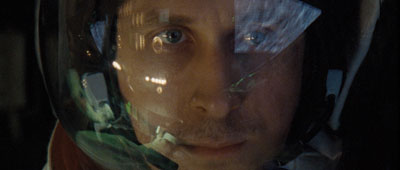 Period Authenticity: Costume Design
Period Authenticity: Costume Design Thanks to NASA's database"complete with its archival photos"costumer Mary Zophres and her design team were able to research exactly what the astronauts were wearing at any given time. "NASA's database is like a treasure trove of information," says Zophres. "We go from X-15 to Gemini V to Gemini VIII to Apollo 1 and then Apollo 11. As the space program progressed, the documentation of it became more and more intense. As the country got closer to Apollo 11, they documented it more thoroughly."
Sifting through NASA's archives quickly turned Zophres and her design team into period-dress detectives. "There is a magnitude of research that is available, but it was tricky," she reflects. "They photographed everything from promotional events to test launches, which made it difficult to tell which photos corresponded to what events we were shooting. I felt like I learned about the space program and the launch to the moon all over again. For the Apollo 11 suits we have two. One for each actor, and one for their stunt double."
For the civilian looks in the film, Zophres explains they were lucky enough to have documentation of the astronauts in their personal lives, thanks to Life magazine photographer Ralph Morse. "For Mike, Buzz and Neil, there was quite a lot of civilian photographs taken of them leading up to the launch," says the costumer. "We tried to look at as many of the photographs of the real people that we could possibly get our hands on and then get glean from that. For example, Olivia, who plays Pat White, went to visit with Ed and Pat's daughter and got her hands on some family photographs. That was hugely helpful. I wasn't trying to replicate the actual photograph, but just glean from these pictures what the general sort of individual style of the people that we're trying to capture.
"There are certain things that were dictated by what was available," she continues. "First of all, it's before the internet; there were two places to shop in El Lago, Texas. There was a JC Penny and a Sears, and that is a reason why some of the guys feel like they're in a similar style. That's because that that's all they had access to."
The costumer appreciated that there was nothing frilly about Janet. She muses: "That's obvious in her clothes, but we did try to show a passage of time. In the beginning, she's in her twenties, and then she ends up in her thirties. There's a maturing that goes on with both Janet and Neil, and that we see more obviously with those two characters than with anybody else."
With a film set from 1961 to 1969, Zophres and her team had their hands full portraying a period piece that spanned almost a decade. "Suiting is the hardest thing to find, even down to the right weight in suiting," she offers. "That was the biggest challenge on this, but we did find some good pieces of vintage material that we were able to construct pieces for Janet and pieces for Neil. We did build a lot of clothing but a lot of it was found also, which was great. It helps lend to the authenticity of the look is to use real period clothing."
First Man
Release Date: October 11th, 2018
Have You Seen This?
MORE



